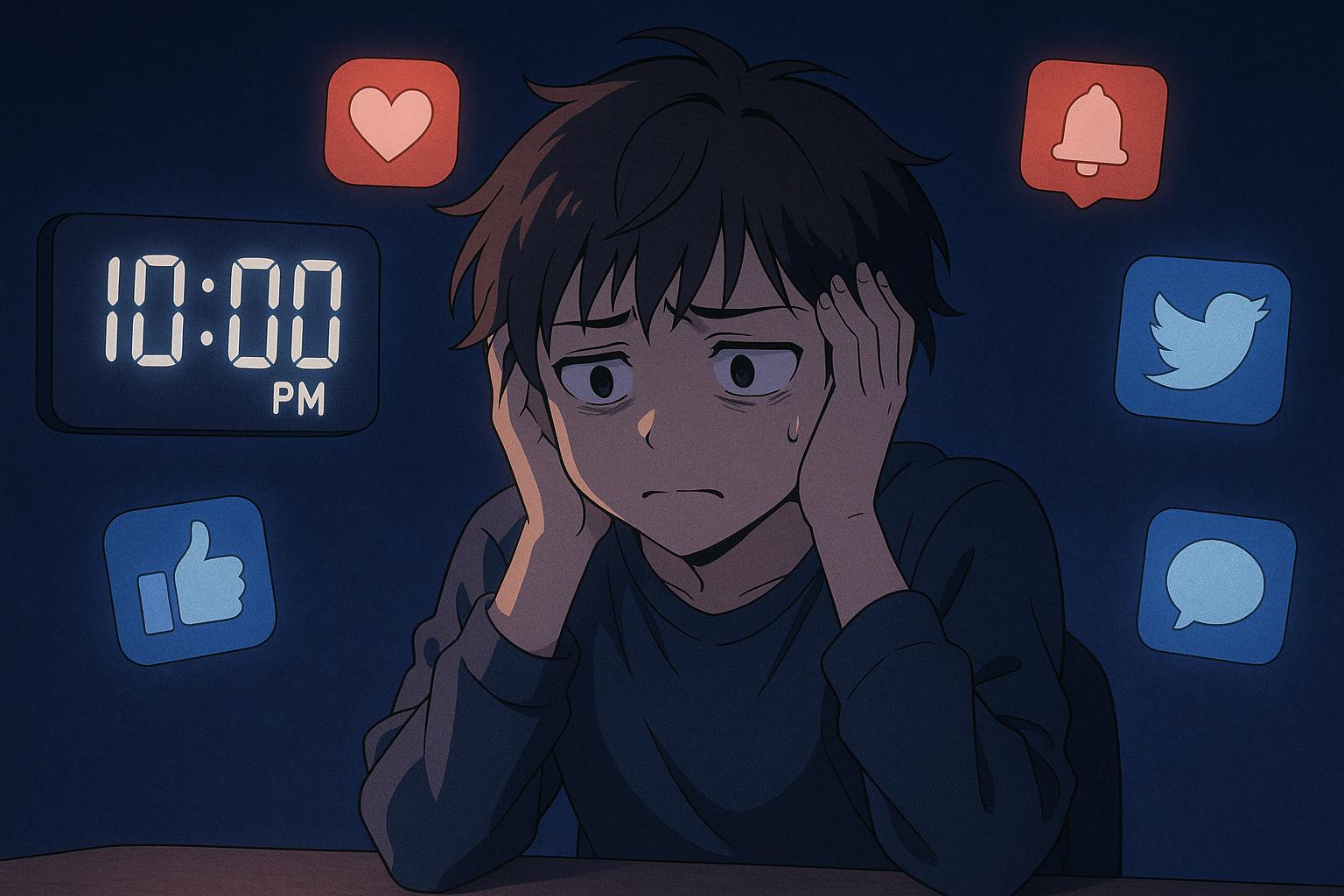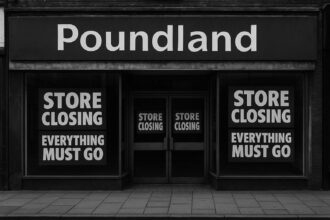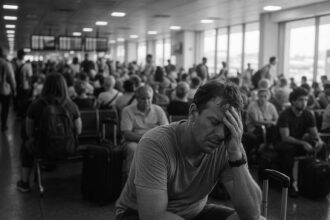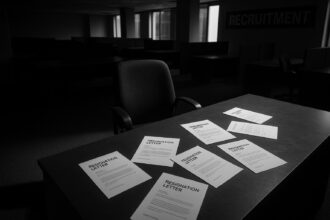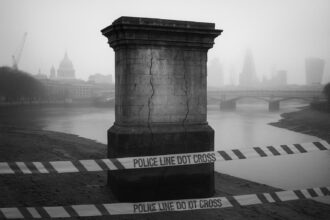A new British Standards Institution survey reveals nearly 50% of UK young people aged 16 to 21 would choose to live without the internet, citing harmful effects of social media on mental health. The findings have reignited calls for stricter online safety laws and digital curfews to protect vulnerable users.
Recent research has illuminated a stark reality for young people in the UK: almost half prefer a world without the internet. This survey, conducted by the British Standards Institution, revealed that 46% of 16 to 21-year-olds would choose to live in an environment devoid of digital connectivity. The findings resonate profoundly with growing concerns surrounding the mental health impacts of social media, as nearly 70% of participants reported feeling worse about themselves after engaging with these platforms.
Compounding this issue, half of the respondents expressed support for a proposed “digital curfew,” which would limit access to specific apps and sites after 10 PM. The study highlighted disturbing behaviours among young users, with 42% admitting to deceiving their parents about their online activities. Additionally, a significant portion reported creating fake personas—40% had established “burner” accounts and 27% copped to impersonating entirely different people. Such decisions speak to a broader anxiety surrounding online identity and exposure.
Given this context, the suggestions put forth by the technology secretary, Peter Kyle, to implement mandatory cut-off times for popular applications have garnered attention. Rani Govender, policy manager for child safety online at the NSPCC, asserts that while a digital curfew could be beneficial, it is not a panacea. “A digital curfew alone is not going to protect children from the risks they face online,” she said, underscoring that such measures need to be part of a more comprehensive strategy aimed at ensuring safer online environments.
Supporting Govender’s arguments, Andy Burrows, chief executive of the Molly Rose Foundation, highlighted the pressing need for legislative action to enforce strict safety regulations for social media platforms. He pointed to the dark side of algorithms that can inadvertently direct users, particularly younger ones, towards harmful content. Burrows insisted that “new laws were urgently required” to create design principles prioritising user safety, especially for vulnerable demographics.
The survey’s results feed into a broader dialogue about the adequacy of current regulations governing social media. With three-quarters of respondents acknowledging increased online engagement since the pandemic began, many express concern that this behaviour has detrimental effects on their mental health—68% of participants confirmed they felt that way after spending time online.
This issue isn’t unique to the UK. Globally, countries have begun examining the repercussions of social media on youth. For instance, several nations, inspired by Australia’s recent legislation banning social media use for those under 16, are potentially shaping laws that could redefine the digital landscape for minors. The impacts of digital platforms, particularly smartphones, have been linked to increased rates of anxiety, depression, and even eating disorders among young people. It is a sentiment echoed not only by psychologists but also educational institutions—Thomas Mills High School in Suffolk has taken proactive measures by banning smartphones during class hours, reflecting a growing recognition of mobile phone misuse in a learning environment.
Moreover, surveys indicate that the majority of adults across the UK and France share concerns regarding excessive smartphone use, with many advocating for stricter regulations to shield children from online risks. The notion that young people feel trapped within social media ecosystems is underscored by findings from the mental health charity YoungMinds, which revealed that over a third of youths wish they could disengage from these platforms at least weekly.
In a world that increasingly hinges on digital interaction, the question remains: how can society strike a balance between connectivity and the safeguarding of mental health? The demand for urgent action is clear, as young people assert both awareness of online risks and a desire for substantial changes to protect them from a landscape they intimately understand is fraught with peril.
Reference Map
- Paragraph 1: [1], [2]
- Paragraph 2: [1], [2]
- Paragraph 3: [1]
- Paragraph 4: [1], [3], [4]
- Paragraph 5: [1], [4], [5]
- Paragraph 6: [1], [6]
- Paragraph 7: [3], [7]
Source: Noah Wire Services
- https://www.theguardian.com/technology/2025/may/20/almost-half-of-young-people-would-prefer-a-world-without-internet-uk-study-finds – Please view link – unable to able to access data
- https://www.theguardian.com/technology/2025/may/20/almost-half-of-young-people-would-prefer-a-world-without-internet-uk-study-finds – A recent survey reveals that nearly 70% of 16- to 21-year-olds feel worse about themselves after spending time on social media. Half support a ‘digital curfew’ restricting access to certain apps and sites past 10pm, and 46% would prefer a world without the internet. The study also found that 25% of respondents spend four or more hours daily on social media, and 42% have lied to their parents about their online activities. The findings have prompted discussions about potential government interventions to protect young users online.
- https://www.ft.com/content/8f7615a8-8ae0-427f-b958-fd7d6162ec2e – Thomas Mills High School in Suffolk, UK, has implemented a ban on smartphones during school hours, requiring students to store their phones in lockers until the end of the day. This initiative aligns with new measures adopted by several UK schools, driven by research linking smartphone use to rising rates of eating disorders, depression, and anxiety among young people. Labour MP Josh MacAlister has proposed a ‘safer phones’ bill aimed at banning smartphones in schools to mitigate their negative impact on children’s mental health, sleep, and learning.
- https://www.ft.com/content/4c7d99cb-9022-4c82-878a-5852e0a07c24 – An international movement is gaining momentum to ban social media use for teens amid mounting evidence of its harmful impact. Inspired by Australia’s recent ban for under-16s, countries like France, Indonesia, and Switzerland are considering similar laws. Social media has been linked to deteriorating teen mental health and impaired cognitive and social development. Internal documents from TikTok and Snap reveal knowledge of these effects, including anxiety, diminished empathy, and disrupted sleep. Social psychologist Jonathan Haidt attributes a decline in childhood well-being to the proliferation of smartphones and associated technologies.
- https://www.moreincommon.com/social-media-24/ – In May 2024, More in Common conducted comprehensive surveys across the United States, United Kingdom, France, and Germany to understand the impact of smartphones and social media on people’s lives. The survey found that a majority of adults don’t go more than two hours without checking their phone, and around half feel they are spending too much time on their phone. Concern about social media’s negatives is stronger in the UK and France, with majorities in every country supporting regulation of social media to protect children.
- https://www.bbc.com/mediacentre/2024/50-percent-of-teenagers-feel-anxious-without-their-smartphones-a-survey-for-bbc-suggests – A survey commissioned by BBC Radio 5 Live and BBC Bitesize found that half of teenagers aged 13-18 feel anxious when they do not have their smartphones with them. Additionally, 74% said they wouldn’t consider swapping their smartphones for a more basic device. The survey also revealed that a quarter of teens use their phones for more than five hours on a typical day, highlighting the significant role smartphones play in their daily lives and the potential impact on their mental health.
- https://www.youngminds.org.uk/about-us/media-centre/press-releases/a-third-of-young-people-feel-trapped-on-social-media/ – Mental health charity YoungMinds found that more than a third (34%) of young people want to leave social media sites at least once a week but feel like they can’t. The research also revealed that over a fifth (22%) are automatically shown distressing content by social media platforms based on their previous online activity at least once a week. Despite these challenges, many young people find social media helpful for discussing mental health, with one in three doing so every week or every day.
Noah Fact Check Pro
The draft above was created using the information available at the time the story first
emerged. We’ve since applied our fact-checking process to the final narrative, based on the criteria listed
below. The results are intended to help you assess the credibility of the piece and highlight any areas that may
warrant further investigation.
Freshness check
Score:
9
Notes:
The narrative is recent and directly references a study from 2025, indicating freshness. However, some general concerns about internet use and mental health are longstanding issues.
Quotes check
Score:
8
Notes:
The quotes from Rani Govender and Andy Burrows are specific and traceable to recent discussions on digital safety, though exact dates of their statements are not specified.
Source reliability
Score:
9
Notes:
The narrative originates from The Guardian, a well-established and reputable news source.
Plausability check
Score:
8
Notes:
The claims about young people’s preferences and concerns regarding the internet are plausible given recent trends and studies on digital use and mental health.
Overall assessment
Verdict (FAIL, OPEN, PASS): PASS
Confidence (LOW, MEDIUM, HIGH): HIGH
Summary:
The narrative is supported by recent data and quotes from credible individuals, published in a reliable source. The concerns raised are consistent with broader discussions about digital safety and mental health.


